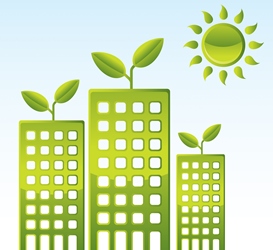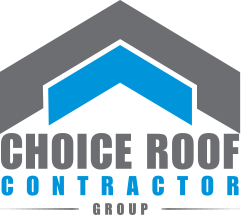Today, we will take a brief look at the definition of sustainability and how it has grown in popularity in mainstream American society. Then we examine its influence in the construction industry as well as in the commercial roofing marketplace.
The Concept of Sustainability in the American Marketplace
 According to the U.S. Environmental Protection Agency, “sustainability” refers to public and private sector efforts to bring social and business conditions in line with quality standards for environmental well-being. Parties that involve themselves in these efforts include the general public, small businesses, large corporations, not-for-profit organizations, and agencies at all levels of government. They strive to improve how they conduct themselves or do business in a way that “sustains” the environment and promotes human health.
According to the U.S. Environmental Protection Agency, “sustainability” refers to public and private sector efforts to bring social and business conditions in line with quality standards for environmental well-being. Parties that involve themselves in these efforts include the general public, small businesses, large corporations, not-for-profit organizations, and agencies at all levels of government. They strive to improve how they conduct themselves or do business in a way that “sustains” the environment and promotes human health.
From a consumer point-of-view, sustainability has become a key buzzword for how businesses of all sizes portray themselves to their customers. As consumer interest in environmental well-being has increased, other buzzwords including “going green”, “sustainable business”, and “environmental advocacy” have become all the rage.
These words’ growing popularity has been an indicator of another factor and how it has grown: consumer interest in companies that offer “green” products or services. In recent years, consumer surveys have shown this to be the case. Check out a couple of studies, at national and global scales, below that show this.
- In a consumer survey from Ipsos, 51 percent of American consumers report they care about companies that are doing their part to help the environment.
- On a global scale, consumers are interested in “green” company brands as well. The Fifth Annual Tork Sustainability Study found that 78 percent of global consumers purchase green products or services
- In the Tork Study, that was a nine-percent increase from 2012.
In other words— the efforts a company takes to promote environmental protection have become a dealbreaker for many consumers in which products and services they purchase. This influence has grown in the construction industry, too.
Sustainability in American Construction
Consumer interest in environmental sustainability has driven many innovations in the American construction industry as well. “Green” building materials, construction products that are environmentally-friendly, and other “eco-oriented” building products have come to the fray. The foundation of environmentally-minded construction was first put down in the early 1900s during the Industrial Revolution. But it really became mainstream in the 1970s, when the United States struggled with its energy supply due to tense global economic and socio-political conditions. Demand for alternative energy sources to fossil fuels surged. The tangible beginning of what has become known as “green construction” emerged as a result.
Since then, green construction, or green building, has established a firm foothold in the construction industry. Just consider the following statistics from the U.S. Green Building Council:
- According to McGraw Hill Construction, by 2015 around 40-48 percent of new nonresidential construction will be green.
- By 2015, that means that new, green nonresidential construction will be a $120-145 billion market.
- In a 2012 survey by McGraw Hill Construction, 58 percent of American responders said they expect 58 percent of their construction to be green in 2015.
This shift extended to the roofing industry as well.
Sustainability in American Commercial Roofing
In the 1970s, the American roofing industry was strongly impacted by the appearance of high-performance, earth-friendly acrylic roof coatings. These elastomeric roof coatings made it possible for building owners to have strong energy savings and make their buildings more environmentally-friendly. In other words, the arrival of acrylic roof coatings was groundbreaking for American roofing.
Conklin was the company responsible for bringing the first highly energy-efficient, white acrylic roof coating to market. With the appearance of roof coatings on the scene, the roofing industry shifted toward a greater focus on more energy-efficient applications for roofing. As a result, today some popular, environmentally-friendly applications for roofing are white roofs and green roofs.
Sustainability’s Impact on Today’s Commercial Roofing Companies
For existing and new commercial roofing companies of all sizes, the concept of sustainability has tremendous implications. Consumers are now likely to use products or services from a company that promotes green initiatives or offers green product or service offerings. In the roofing industry, this has a twofold impact—the products that a roofing company uses have a direct impact on how a roofing company is perceived. Plus, roofing products have a heavy, day-to-day impact on the lives of consumers, as they provide protection from outdoor elements or other hazards. The drive for commercial roofing companies to use environmentally-friendly roofing products, whether they help save energy or reduce energy usage, truly has never been greater.
Because reputation is so important in the construction industry, our nationwide network of commercial roof contractors exclusively use products from Conklin. Should you be interested in learning more about why Conklin roofing products stand out aside from their reputation of 40+ years of proven performance, give us a call at 800-670-5583.


